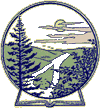"With freedom, books, flowers, and the moon, who could not be happy?" - Oscar Wilde
This morning I awoke to find a beautiful blanket of white draped across the world around me. And then I remembered it's springtime! This year in the northern US winter has been reluctant to release its grip. But if you listen and look carefully, you will find that spring is indeed under way. Birds are singing, waterfowl and raptors are nesting, trees are budding and the flowers are peeking through. Soon the air will warm so that we can shed our winter coats and soak in the sunshine. Until then, here are some beautiful springtime blossoms to brighten your day.
1. Crocus and Honey Bee
Making its appearance in late winter, the hardy crocus is one of the earliest blossoms of the season. Honey bees, recovering from the cold winter, flock to these pollen-laden plants gathering nectar to produce their honey. During this process the pollen collects on their hind legs in a "pollen basket". As bees move from flower to flower they inadvertently drop some

of that pollen which results in the transfer from the female to the male of the plant species. This brings about the fertilization required to propagate the flowers.
" Though they only bloom for a short period of time, they bring that special pop of color! And yes, the bees that come along with them are so important too! " - Jessica Pack
2. Daffodils (Narcissus)
Also known as daffadowndilly, these beautiful flowers are like bursts of sunshine exploding in yards throughout the US. These sweet-smelling perennials are native to the meadows and woodlands of Europe and North Africa. Planted here during autumn, the bulbs will lie dormant throughout much of the winter. The flower stem and leaves begin to develop within the bulb, waiting to emerge when the ground begins to thaw.

Because of their toxicity, Daffodils are resistant to the deer and rabbits that often forage in our yards. This field of daffodils was photographed in New Jersey in the spring of 2018 by Paul Steil.
Daffadowndilly by A. A. Milne
She wore her yellow sun-bonnet, She wore her greenest gown; She turned to the south wind And curtsied up and down. She turned to the sunlight And shook her yellow head, And whispered to her neighbour: "Winter is dead."
Let's hope that will soon be true.
3. Crabapple (Malus) Blossoms and a Ladybug
Crabapple blossoms are not only beautiful when in full bloom, they are also another excellent pollen source. Again, spread by insects, cross-pollination can occur between several species of apple and crabapple trees.

This white crabapple, photographed by Kelly Frederick Sweet, is sporting a ladybug. Small members of the beetle family, they also provide important assistance to flowers, but not through pollination. As insectivores, they prey on the aphids and other insects that eat and would otherwise destroy plants.

This flowering crabapple tree, photographed by Waterman's own Cheryl Utter, can be found at the Waterman interpretive center on Hilton Road in Appalachin, NY. Just pull into the parking lot and look up to see this large tree beautifully situated in the middle of the lot. While there you might want to check out the miles of trails which include interpretive signs, nest boxes, trees and a gorge with a stream.
4. Cornell Gardens
If you are in search of even more beauty, the Cornell Botanic Gardens provide "an extended living museum with a mature botanical garden and arboretum that help make Cornell

one of the most beautiful campuses anywhere." The gardens are located on campus and are free and open daily from dusk until dawn. Photographed by Gina Vaughan, this is just one of the many beautiful blossoms that can be found at Cornell in late springtime.
